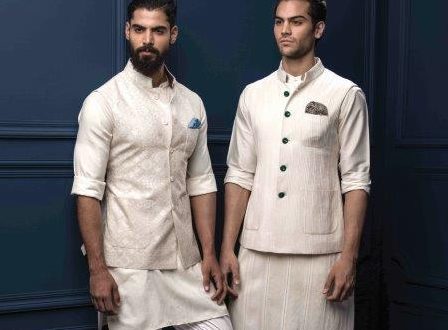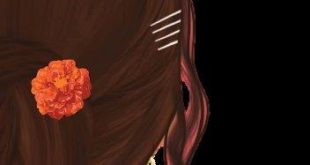Bollywood’s top fashion designer Raghavendra Rathore in a special interview with Desi Today talks about current trends in male tradition clothing
Canadian Prime Minister Justin Trudeau’s latest trip to India attracted criticism on many fronts. One main front was the choice of Trudeau family’s traditional wardrobe. Indian media called the attire “Too Indian even for Indians.” Some even called it a fashion disaster? It made Canadians scratch their heads and ask what was it about his attire that ticked off a nation whose entire culture is embossed in Sherwani’s, salwar Kameez and Sarees.

Be it any formal gathering, festivals, celebrations, weddings — Indians love to wear traditional outfits. In fact India’s Prime Minister Narendra Modi’s stylish traditional Indian look has rejuvenated the lost love for kurta payjamas, ethnic turbans and tradition jackets with round necks which was earlier known as Nehru jacket (named after India’s first PM Jawahar Lal Nehru) is now commonly called Modi Jacket.
So why Canadian Prime Minister was criticized for donning Indian attire? Perhaps it was the choice of colour, and style and embroidery that was out of sync with the current trends. An article written in The Times of India “How not to turn fashion diplomacy into fashion desire” talked Trudeau’s overdone traditional Indian attire and how he could have just gone for simple yet stylish Indian attire.
The traditional Indian attire does not need to have bright colours and tacky heavy embroidery. In fact the latest trends in traditional outfits are witnessing a complete departure from heavy jewellery and golden embroideries.
Desi Today invited one of India’s top designer Raghavendra Rathore to discuss what are some current trends when it comes to male traditional attire. So next time when you dress up for an Indian event, you are in sync with the style.
Born and brought up in the epicentre of heritage and culture, Raghavendra Rathore is India’s foremost name in Luxury Men’s Wear. His Royal lineage and 1200 years of family history construct the very foundation of his brand and creative calling. From his hometown, Jodhpur, stems each and every thread of inspiration that forms the very back bone of the “Raghavendra Rathore Jodhpur” brand. Driven by a holistic vision of luxury and inspired by the old world regalia of Rajasthan in India, the offering is classic with clean and modern sensibilities, cutting across the borders and corners of the world.
 Internationally, Raghavendra Rathore (RR)has been recognized for his contribution to Global Fashion, for placing the quintessential Jodhpur Badhgala Jacket, on the fashion map. It is now globally accepted as an iconic piece in fashion history from Jodhpur, having found its niche among gentlemen’s wardrobes worldwide.
Internationally, Raghavendra Rathore (RR)has been recognized for his contribution to Global Fashion, for placing the quintessential Jodhpur Badhgala Jacket, on the fashion map. It is now globally accepted as an iconic piece in fashion history from Jodhpur, having found its niche among gentlemen’s wardrobes worldwide.
RR on his fashion journey
My approach to the design industry was somewhat logical, I had great passion to study electronics and robotics but as I was exposed to the American education system, I found myself gravitating towards the liberal arts. Studying Greek mythology and then moving in the creative arts with good advices all along my education journey, helped me get clarity and move in the commercial arts and design.
Once I finished from the Parsons School of design in New York, it was logical to explore possibilities in the city. Over time I realised the opportunity in Asia and decided to move back with bags and baggage to Jodhpur to set up my own brand.
On History of Sherwani
In earlier times, when no shoulder pads or structure was used in the way people dressed in the outfit of their choice, in the Asian region, Angarkha was worn in different versions for different states. With the British invasion and its influence, came the tailoring techniques that were re-adapted in India to suit the newly inculcated western minds. About the same time the camera had been invented and portraiture was the best place to make a personal expression. Personal tailoring and heirloom jewellery were accessories to this fancy upper-class fad. As personal tailors adapted the ancient Angarkha in different avatars, the Angarkha started to evolve into two directions. The northern states that had fought the Moghul invasions chose to go with the formal & tapered version, the Achkan. The
states that leaned towards the Moghul ethos, refrained from this adaptation and embraced a modified version, namely the Sherwani. Hence the two looks, the Achkan & Sherwani became part of the two separate universes, visually and culturally, segregating the two philosophies, forever.
The Bollywood experience
My company and I are privileged to have worked with one of the best directors and movie stars in Bollywood. The bespoke nature of our business falls in perfect line with the demand of celebrities from the movie industry who need a new outfit each time they make their appearances. There has been a lot of learning and also some ideas are so good that they become a part of the new collections.
 On current trends in Male traditional clothing
On current trends in Male traditional clothing
I foresee the Achkan becoming a big trend this year, clients have taken to wearing it casually in fine linen with loose pants, a look extremely different from what is worn traditionally. For the groom it is the perfect solution specially for the wedding night, heavy ornamentation has given way to focus on styling, cut and choice of fabric.
What’s best for Indo-Canadians
I always suggest a wardrobe to suit ones personality and not to impress others, whatever silhouettes and colours work for you in the West can
work for you in the East with very slight tweaks. In other words, choose silhouettes and colours that offer confidence and gel with your personality and add a “small” percentage of the cultural layering.
Latest trends in bridegroom fashion
A big departure from heavy embroideries to a more elegant wardrobe is in the asking by the groom’s for the coming season. Men must look like men and not necessarily get swayed to match their outfits with their prospective brides.
 Desi Today Magazine
Desi Today Magazine




